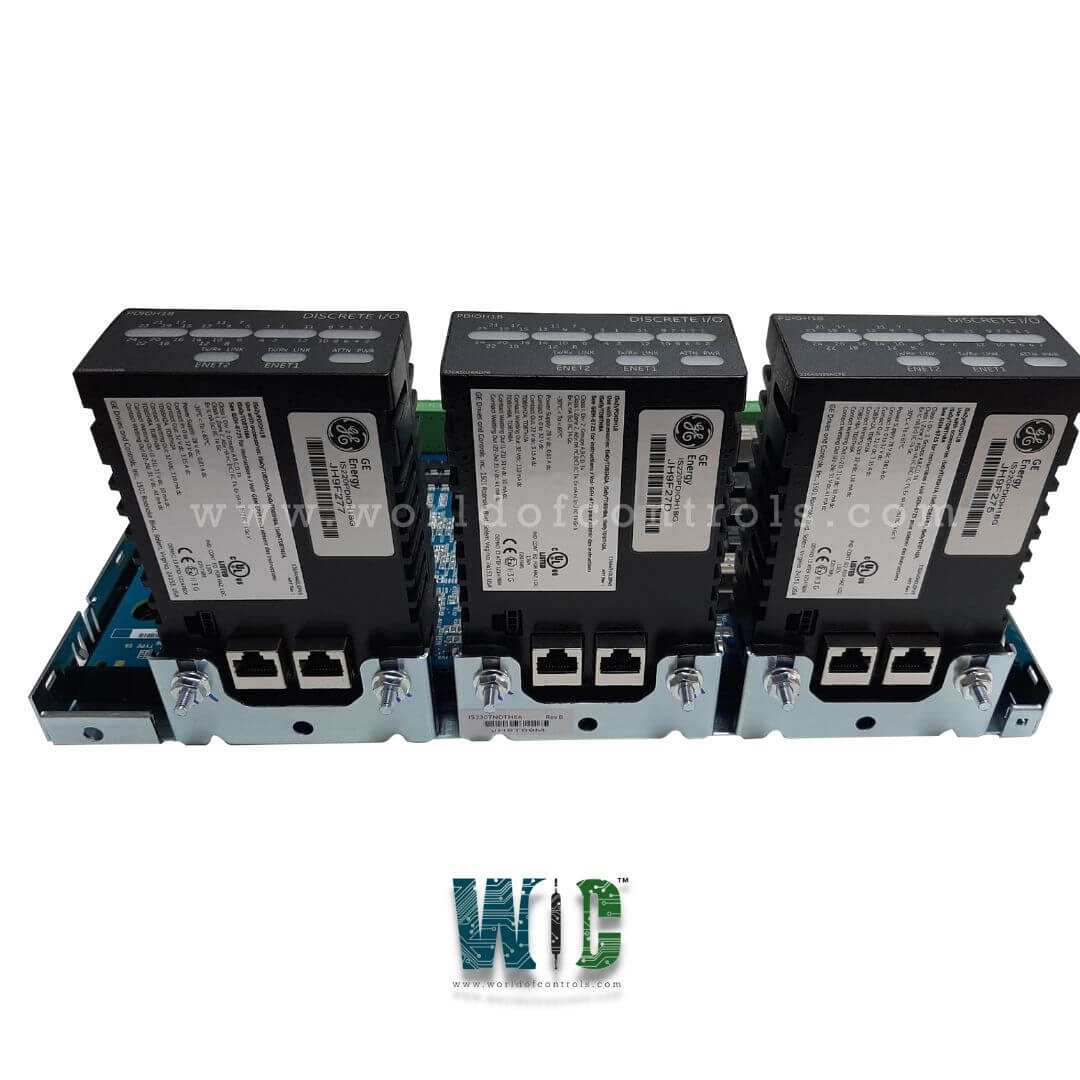
World Of Controls understands the criticality of your requirement and works towards reducing the lead time as much as possible.
IS230TNTCH4C - Thermocouple Input Assembly Board is available in stock which ships the same day.
IS230TNTCH4C - Thermocouple Input Assembly Board comes in UNUSED as well as REBUILT condition.
To avail our best deals for IS230TNTCH4C - Thermocouple Input Assembly Board, contact us and we will get back to you within 24 hours.
SPECIFICATIONS:
Part Number: IS230TNTCH4C
Manufacturer: General Electric
Series: Mark VIe
Product Type: I/O Module
Input Types: Type K, J, T, E, N, R, S, B
Number of Channels: 8
Metal Oxide Varistors Quantity: 7
Power Requirements: +5 V dc, 6 A
No.of Connectors: 12
Input Voltage Range: ±50 mV
Electrical Isolation: ≥ 2500 Vrms
Power supply voltage: 28 V dc
Technology: Surface mount
Input Impedance: >10 M Ohms
Analog Output Signals: 4–20 mA
Output Resolution: 16-bit DAC
Operating Temperature: -20 °C to +70 °C
Size: 15.9 cm high x 17.8 cm
Weight: 0.8kg
Repair: 3-7 days
Availability: In Stock
Country of Origin: United States
FUNCTIONAL DESCRIPTION:
IS230TNTCH4C is a Thermocouple Input Assembly Board manufactured and designed by General Electric as part of the Mark VIe Series used in GE Distributed Turbine Control Systems. The Thermocouple Input Assembly Board is designed to interface with multiple thermocouple sensors, converting their low-level voltage signals into standardized, accurate temperature data for monitoring and control systems. It incorporates cold junction compensation to correct for ambient temperature variations at the thermocouple connection points, ensuring precise measurement. The board also includes signal conditioning features such as amplification, filtering, and electrical isolation to protect the system from noise and voltage spikes while maintaining signal integrity. This assembly supports a variety of thermocouple types (e.g., Type K, J), processes signals from multiple channels simultaneously, and provides diagnostic feedback to detect sensor faults or wiring issues, which is critical for safe and reliable operation in industrial applications.
INSTALLATION:
The board is mounted securely within a compatible rack or enclosure, ensuring stable mechanical and electrical connections through the appropriate backplane or connector interfaces. Thermocouple leads must be connected carefully to the board terminals, respecting polarity markings to avoid measurement errors. Use shielded and rated cables to reduce interference. Proper grounding is essential to prevent noise and ground loops. Cold junction compensation sensors, if external, should be installed close to the board to accurately reflect terminal temperatures.
OPERATION:
In an HVAC control system, the Thermocouple Input Assembly Board transmits accurately conditioned temperature signals to the Building Management System (BMS) or HVAC controller using standardized analog outputs such as 4–20 mA current loops (in compliance with IEC 60381) and/or digital communication protocols like Modbus RTU or BACnet. These temperature inputs enable precise real-time monitoring and automated control of heating, ventilation, and air conditioning components, including modulation of dampers, control of heating coils, chilled water valves, and fan speeds to maintain occupant comfort and energy efficiency by ASHRAE standards.
The Thermocouple Input Assembly Board transmits the conditioned and compensated temperature signals as standardized analog or digital outputs—such as 4-20 mA current loops, voltage signals, or digital communication protocols (e.g., Modbus, HART)—to the supervisory control system or Distributed Control System (DCS). These precise temperature inputs are integral for automated process control functions, including modulating fuel injection, adjusting cooling flows, and initiating safety interlocks or alarm sequences based on predefined threshold limits. The board incorporates advanced self-diagnostic algorithms that continuously monitor each thermocouple channel for integrity issues such as open circuits, short circuits, cold junction sensor failures, or signal drift. Fault detection triggers diagnostic alarms and status flags that are communicated to the control system’s human-machine interface (HMI), enabling timely operator intervention.
WOC proudly maintains the industry’s largest inventory of replacement parts for GE Distributed Turbine Control Systems. We supply both new and refurbished boards, each supported by a comprehensive warranty. Additionally, we provide expert repair services for faulty components to ensure optimal system performance. Our dedicated support team is available 24/7 to assist with all your OEM and automation needs. For inquiries regarding pricing, availability, or technical support, please contact us via phone or email. Our specialists are always ready to provide prompt and reliable assistance.
What is a Thermocouple Input Assembly Board?
It receives low-level voltage signals from thermocouples measuring temperature. The board converts these signals into standardized data for turbine control systems. This enables accurate temperature monitoring, critical for turbine safety and efficiency.
What tools are needed to troubleshoot the Thermocouple Input Assembly Board?
Common tools include a digital multimeter, oscilloscope, and OEM diagnostic software. These help verify voltage inputs, signal integrity, and communication with control systems. Proper PPE and manuals are essential during troubleshooting.
What is the typical input voltage range for the board?
The board typically accepts millivolt signals ranging from around -10 mV to +50 mV from thermocouples. This range varies by thermocouple type and board design specifications. Always consult the technical manual for exact voltage input limits.